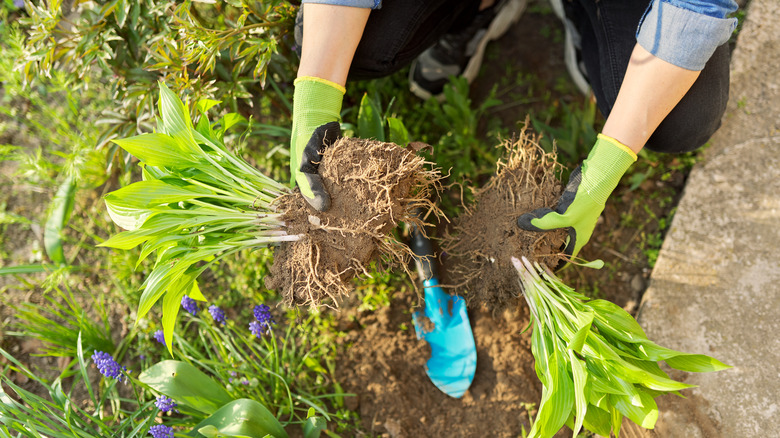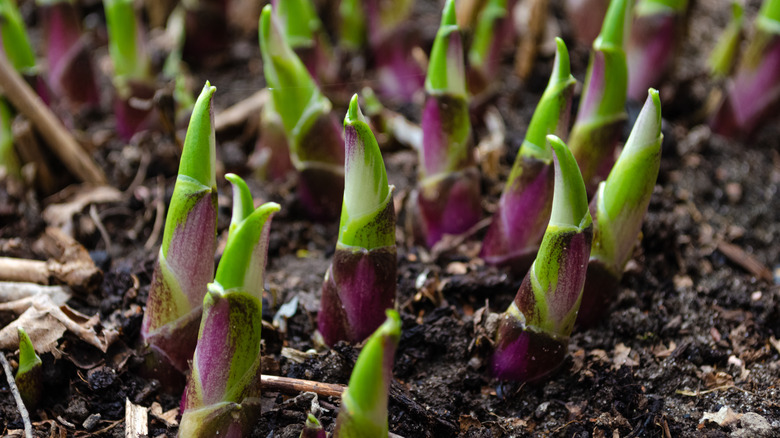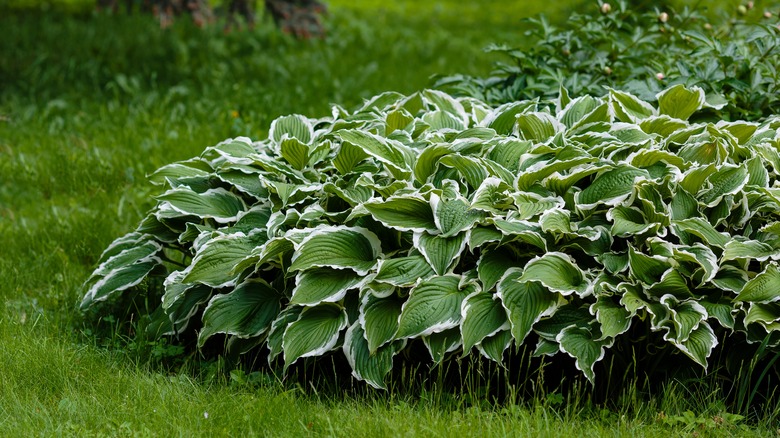When Is The Best Time To Divide Hostas In Your Garden?
Hostas, hardy and attractive, adorn your yard with richly green leaves complemented by lavender or white blooms, yet seemingly ask nothing in return. But there comes a time when you must "divide and conquer" to keep your little patch of paradise verdant. So, when should you split hostas? Spring, when those tiny hosta eyes start peeking out from their winter hide, is optimal. You can also take advantage of the fall's mellow coolness by splitting them in the autumn. However, if the clumps of hosta are beginning to resemble a subway crowd during peak commuting hours, an unscheduled splitting should suffice. Overcrowded plants compete for nutrients and space, compromising overall health and appearance.
Dividing hostas allows the perennials to thrive into their golden years right where you want them, and it also allows you also keep your plants within your desired size specifications so that your garden remains neat and tidy. But it isn't just about control. You also get a delightful opportunity to propagate and create new, sturdy versions of your beloved cultivars so your garden remains as vibrant and diverse as an artist's palette. Knowing how to separate hosta plants is equally important. Identify and uproot your prime targets — those overstuffed clumps demanding some personal space — then let them loose with a spade (or hands, if you prefer the hands-on approach).
When to divide hosta plants
The best time to separate hosta plants is spring or early fall. For spring division, aim for when the eyes are popping out, as splitting hostas when they're small requires less effort and minimizes leaf damage. If undertaking this task during the fall, do it earlier in the season, when they require minimal water. Can you divide hostas in the summer? It's doable, but only if you swear to irrigate thoroughly to reduce the shock when transplanting hostas.
As for how often to divide hosta plants, it's mainly about the pace of growth. Faster-growing hostas might need a check-in sooner, while the "slow and steady" folks can enjoy longer uninterrupted time. Every 3 to 4 years is the rough estimate. Don't ignore the signs hosta plants might send your way, though. Stressed or overcrowded hostas that need to be divided could start to experience the loss of blooms, yellowing foliage, and signs of disease.
How to separate hostas in the spring
Begin with pampering your hosta plants with lots of water a day before the grand operation. This aids in softening the soil and reduces transplant shock. You'll need a square digging shovel over a pointed one to prevent root trauma. With your spade, mark a 3 to 5 inch radius around the full-root clump — that's enough of a safe zone to extract most of the roots unharmed. From there, excavate along the outlined boundary (as deep as the clump size demands) to loosen the soil, then pry out the hosta by levering the spade upward.
Bare hands or a handheld tool are equally suited for splitting your hostas. As for the former, pull the clump apart into sections with three shoots, careful not to lose any hosta eyes. A hand saw, shovel, or garden fork should be your go-to when dividing large hostas. When splitting the hosta, ensure every bud or bud collection still has most of its roots attached. Hosta transplants like their new homes spacious. A hole as deep and twice the size of the root mass in a shady area and filled with high-quality soil is recommended. Regular watering and a generous layer of mulch will keep your shoots hydrated. "Hosta la vista," and happy gardening.


